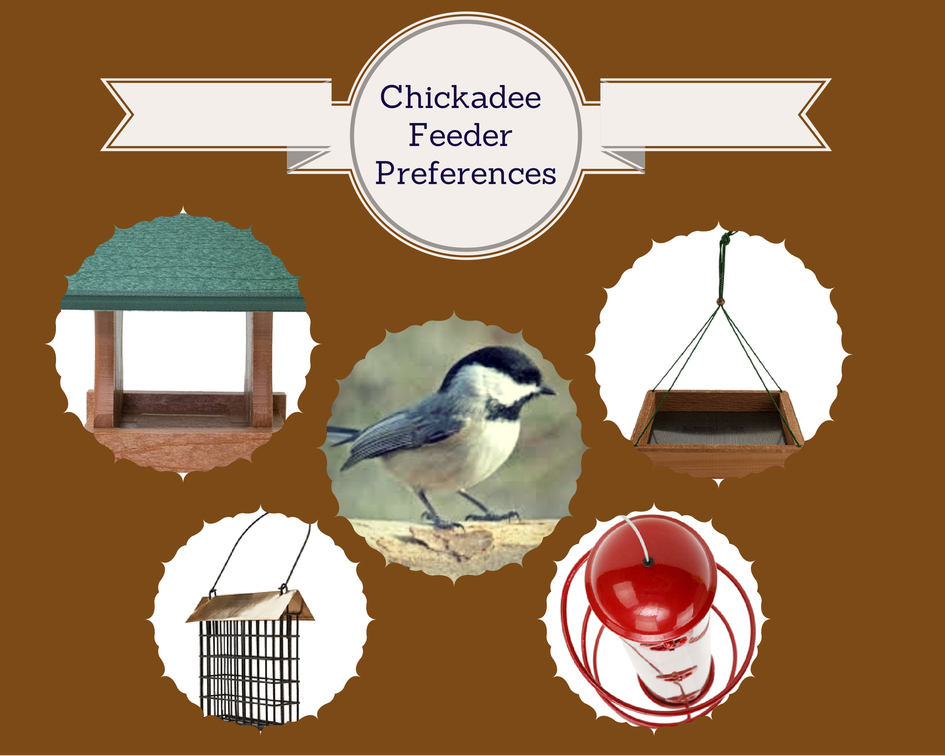There are seven different species of the chickadee. They are named for their distinctive “dee” sound when “singing.”
Chickadees are beloved around the world. If you’re looking to attract these tiny and friendly wild birds to your bird feeders, here’s what you’ll need:
Types of bird feeders for Chickadees
Chickadees are among the easiest birds to attract to your yard. They are energetic and fairly flexible about the type of feeder they will eat from. It is easiest to attract them when you make sure to feed them year round, so having a variety of different feeder options is a plus.

Chickadees and their feeders
Chickadees love many different types of nutrients. Suet, insects, fruit and high-quality bird seed will all work well. Remember that different types of food work best at different types of year and use the feeder guidelines to help you decide what is best for your yard.
- Hopper feeders: These feeders are a popular choice for attracting many different types of birds, including chickadees. Use a high-quality seed or shelled peanuts and you’ll be sure to have chickadees stop by for a visit. Keep in mind that these are small birds, so if larger more aggressive birds are at the hopper feeder the chickadee may not stop.
- Suet feeders: Highly active, chickadees prefer peanut butter-based blocks and their high-protein levels. However, true suet will also attract–especially during the winter months. A suet feeder isn’t even necessarily needed. Just smear peanut butter on the bark of a tree and watch chickadees forage. Keep in mind that this type of bird food isn’t recommended during hot summer months. The fat could stick to the bird’s wings, causing problems with flight.
- Tray feeders: Platform or tray feeders are the best choice for feeding many different birds at the same time and chickadees are sure to be among the mix. Fruit or black oil sunflower seed are great choices for these birds. Just make sure you keep your tray feeder clean and dry at all times.
- Tube feeders: Fill hanging tube feeders with shelled peanuts or sunflower seed and you’ll please noisy chickadees year-round.
Other yard elements to consider
In addition to high-quality bird food, chickadees need a water source and shelter. Keeping a bird bath and a roosting and/or nesting box in your yard will keep chickadees–and other birds–in your yard for longer than just a quick snack.
If you’re a gardener, consider planting shrubs and berry-yielding plants that will give chickadees a place to forage, feed and hide. Thinking even longer-term, comfortable trees can provide a safe-haven for birds to flit away from predators who don’t have the gift of flight.
Be patient and persistent, learning to attract chickadees isn’t difficult, but it can take some time to convince the first birds to stop by.
Following our series on attracting different wild birds to your yard? Be sure to check out the first on Bluebirds and save the downloadable visuals to help you while you shop.

